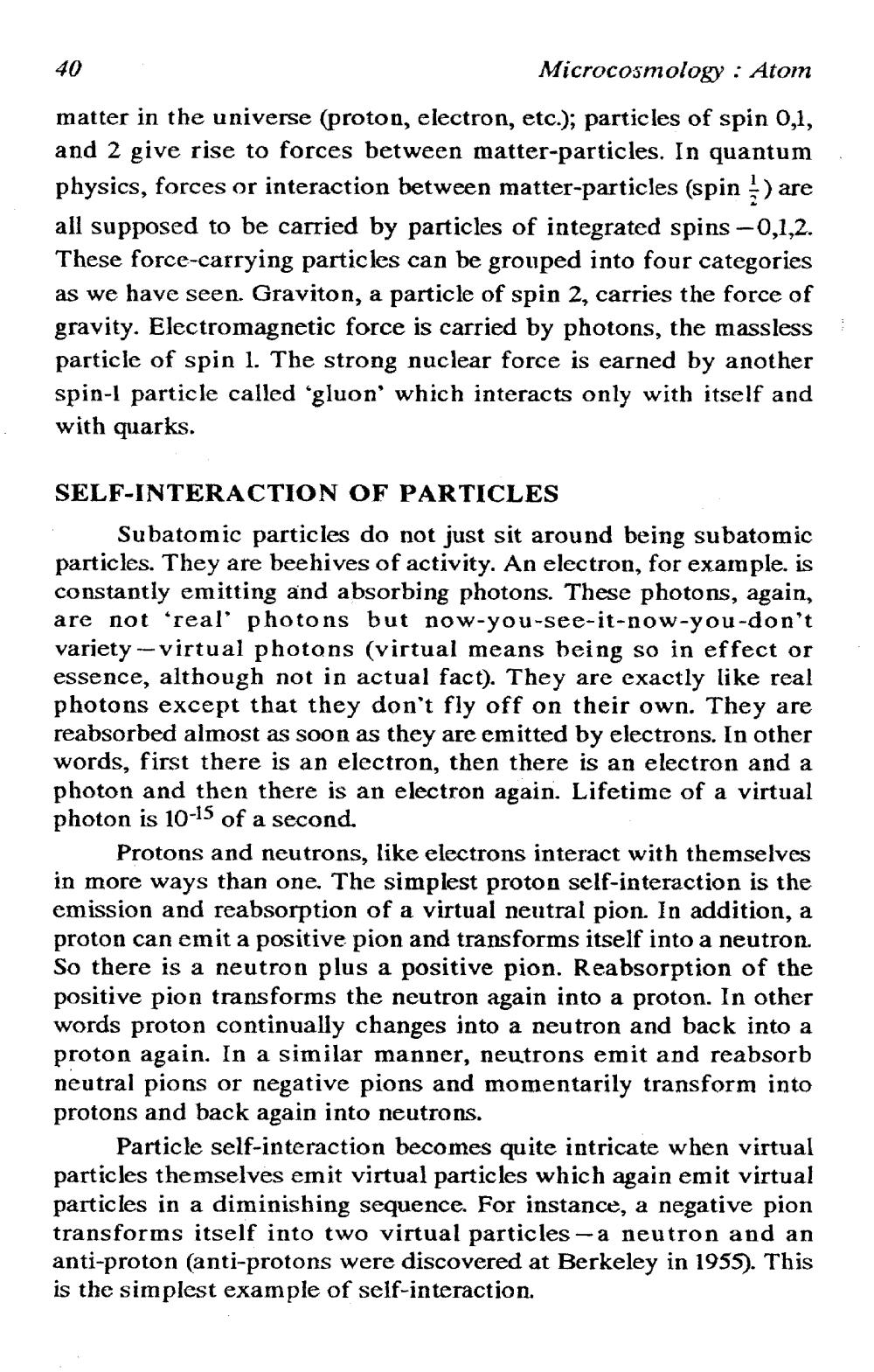________________
40
Microcosmology : Atom matter in the universe (proton, electron, etc.); particles of spin 0,1, and 2 give rise to forces between matter-particles. In quantum physics, forces or interaction between matter-particles (spin ) are all supposed to be carried by particles of integrated spins -0,1,2. These force-carrying particles can be grouped into four categories as we have seen. Graviton, a particle of spin 2, carries the force of gravity. Electromagnetic force is carried by photons, the massless particle of spin 1. The strong nuclear force is earned by another spin-1 particle called 'gluon' which interacts only with itself and with quarks.
SELF-INTERACTION OF PARTICLES
Subatomic particles do not just sit around being subatomic particles. They are beehives of activity. An electron, for example. is constantly emitting and absorbing photons. These photons, again, are not 'real' photons but now-you-see-it-now-you-don't variety -- virtual photons (virtual means being so in effect or essence, although not in actual fact). They are exactly like real photons except that they don't fly off on their own. They are reabsorbed almost as soon as they are emitted by electrons. In other words, first there is an electron, then there is an electron and a photon and then there is an electron again. Lifetime of a virtual photon is 10-15 of a second.
Protons and neutrons, like electrons interact with themselves in more ways than one. The simplest proton self-interaction is the emission and reabsorption of a virtual neutral pion. In addition, a proton can emit a positive pion and transforms itself into a neutron So there is a neutron plus a positive pion. Reabsorption of the positive pion transforms the neutron again into a proton. In other words proton continually changes into a neutron and back into a proton again. In a similar manner, neutrons emit and reabsorb neutral pions or negative pions and momentarily transform into protons and back again into neutrons.
Particle self-interaction becomes quite intricate when virtual particles themselves emit virtual particles which again emit virtual particles in a diminishing sequence. For instance, a negative pion transforms itself into two virtual particles - a neutron and an anti-proton (anti-protons were discovered at Berkeley in 1955). This is the simplest example of self-interaction.




